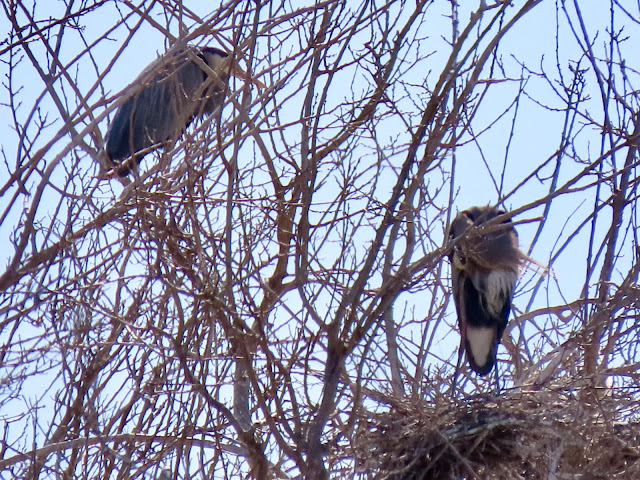Thursday, February 25, 2022
Birding friend, Lois L., shared with me her new birding location(s) in Queen Creek. Due to listening to my GPS instead of Lois, we ended up at the Queen Creek Wash Trail at two different locations. Not far apart, I called her to tell her I had arrived a bit East of her location at Power Road. So, we began walking toward one another.
On the North side of the Wash, my first bird was a COSTA'S HUMMINGBIRD. Not nearly as frequent as the Anna's, I was thrilled to have the sun behind my back as I lifted my camera.
Lois's first bird was a GREATER ROADRUNNER! Missing a photo of that one, we were greatly surprised to find a total of four (4) along our walk together.
Many were perched on tree or bush limbs trying to get warm. While we may wear a down jacket, these clever birds spread their top wings away from the down on their backs, letting the sun warm its finer feathers. Bringing their wings together above that heated down. See below.
Always on the lookout for a small morsel for breakfast, the COOPER'S HAWK, below held its position.\
In such good desert habitat, we also found a BLACK-TAILED GNATCATCHER. 
With marvelous, albeit cool weather (40-57°F), we were thrilled with our first venture to this unique and well-preserved wetland.
The previous week, on Saturday, February 19th, Lois shared another new trail with me, also located in Queen Creek, south of the Queen Creek Wash.
Sonoqui Wash Trail, accessed off of Power and Ocotillo, delivered one special bird, the MONK PARAKEET. They construct a large nest out of short sticks. See my photos below. What a Joy!
That's it for today's post. Will be back before long with migration picking up and weather warming.
Don't forget to check on the link below to view the eBird checklist
View this checklist online at https://ebird.org/checklist/S103694046
View this checklist online at https://ebird.org/checklist/S103034545



















































